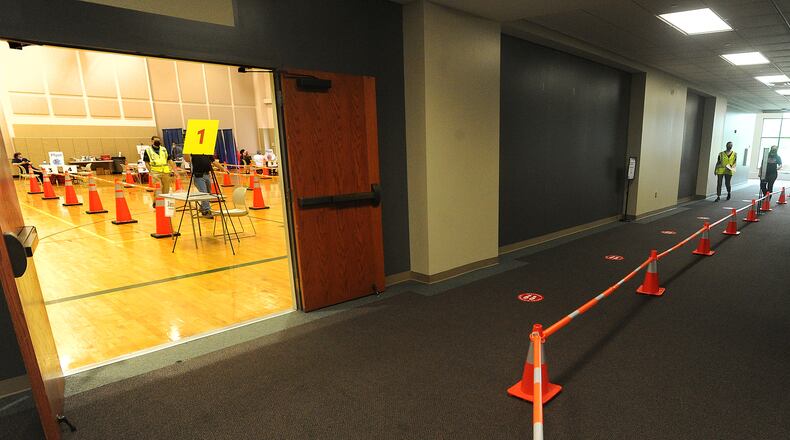And locally, the new situation appears to be at least somewhat disruptive.
A recent anonymous Dayton Area Chamber of Commerce survey asked businesses if the U.S. Centers for Disease Control’s latest mask guidelines will affect workplace policies.
More than a third, 36%, said yes.
“According to our survey, some have chosen to alter their plans (36% of respondents), but the survey was answered anonymously,” said Holly Allen, the chamber’s vice president for communication.
No chamber member has specifically told chamber leaders outside of that survey that they will alter or have altered plans to return to offices, Allen added.
“CareSource continues to offer flexibility to our employees as we monitor the development of the COVID-19 Delta variant,” said Julie Walch, vice president, human resources, business partnership and support at CareSource, one of downtown Dayton’s largest employers. “Our offices have remained opened and employees have full access to work in the office or remotely.”
CareSource is requiring masks in common areas and when social distancing is not possible, regardless of vaccination status, she also said.
“We continue our full return to office plans and will take a phased-in approach,” Walch said.
CareSource did not immediately offer dates for a return to offices. A spokesman said more information will be released when plans are final.
A Premier Health representative said the company is evaluating its return-to-work plans as the pandemic evolves. Premier’s corporate services building is110 N. Main St. downtown.
“At Kettering Health, most of our work requires an in-person interaction for patient care,” said Kettering Health Network spokeswoman Michelle Day. “For our business support roles, we have a policy that offers flexible solutions for working remotely and can adapt that policy as needed.”
At Wright-Patterson Air Force Base, Ohio’s largest concentration of workers in one site, the 88th Air Base Wing recently reinstated a mask mandate and re-established health protection condition “bravo.” Many base workers continue to “telework,” or work from remote locations.
While the “bravo” condition caps the on-site base working population at 50%, base leaders have left staffing decisions to the commanders of more than 100 missions at the base. The base’s previous condition, “alpha,” — which was in force only for about two months — allowed all workers back behind the fence.
Some missions — security, first responders, air traffic control, those working in classified spaces — require workers to be physically on site, Col. Patrick Miller, commander of the air base wing at Wright-Patterson, said last week. “That is going to be up to mission owners,” he said. “The target is no more than 50%.”
“We have to allow individual commanders and directors, who understand their missions, do what they need to do, relative to telework,” said Greg Leingang, vice director of the 88th Air Base Wing, which acts as the base’s landlord.
Nationally, a trend is noticeable. In July, Apple delayed a return to office by at least a month, rolling back its initial plan to bring workers in three days a week starting in September, Bloomberg news service has reported.
On July 28, Google Chief Executive Sundar Pichai said his company is extending its office return for employees until Oct. 18.
According to CNBC last week: Nearly 40% say that the Delta variant has not influenced their existing return to office plans.
Several companies told CNBC that their return to office plans are not set to occur before September or October, and already are based on a new hybrid employment model.
About the Author

